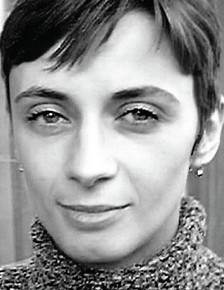
Tatjana Milošević holds a BA and MA degree in composition from the class of Professor Zoran Erić at the Faculty of Music in Belgrade, who also supervised her doctoral artistic project – a two-act chamber opera titled Ko je ubio princezu Mond (Who Killed Princess Mand, 2013). She now teaches as an assistant professor (docent) at the same department. As a visiting professor, she also worked at Old Dominion University in Norfolk, Virginia (USA). She was also a lecturer and jury member at the 15th Young Composers Meeting in Apeldoorn, Holland.
Works by Milošević have been performed at numerous major festivals and concerts of contemporary music in most countries of Europe, the US, South Korea, as well as Serbia and the region. She has collaborated with renowned Serbian and foreign performers and ensembles: the Symphony Orchestra of the Serbian Broadcasting Corporation, Belgrade Philharmonic, St. George Strings, Construction Site New Music Ensemble, the trios Pokret (Movement) and Singidunum, Collegium musicum academic choir, Het trio (Holland), De Ereprijs (Holland), Creo (USA), Intercontemporain (France)… Milošević has won numerous Serbian and international music awards.
Šetnja sa Rinom (A Walk with Rina) explores the compatibility of thematic materials from my earlier works. The piece simultaneously presents the opening theme from my ballet CoinciDance and new thematic materials that lend that theme a different sounding perspective. As a result of this ‘stacking up’ of old and new, a ‘poly-musicality’ emerges, referring to the multi-layered and multi-dimensional quality of the musical materials. In his Letters to Myself, the composer György Ligeti explained this phenomenon in the following terms: ‘Behind music, there is another music, and behind it, yet another music – an infinite perspective, like looking at our reflection in a pair of mirrors, which produces endless reflecting’. In A Walk with Rina, poly-musicality comes to the fore especially toward the end of the piece, where the ballet theme is presented in the violin and the clarinet with gradual deceleration and diminution, while at the same time the toccata aspect in the piano part gradually picks up speed and intensity, which also evokes the mechanism of a musical box.
Rina is the name of the main protagonist of CoinciDance. It is present in various traditions, ranging from Indian and Hebrew to Latin, Anglo-Saxon, and Japanese, and is most typically associated with concepts such as the sea, joy, purity, etc. It may also mean ‘peaceful’ and ‘melody’, which metaphorically points to the theme from that ballet.


